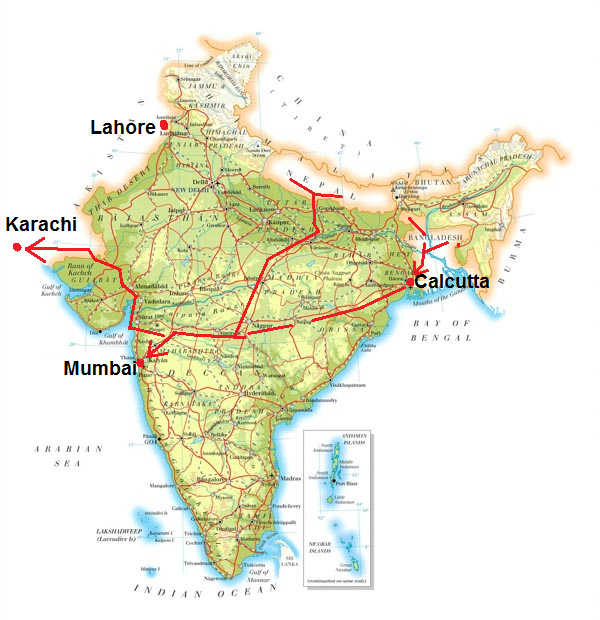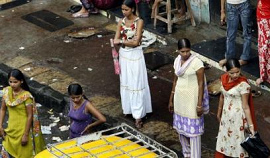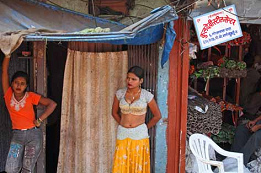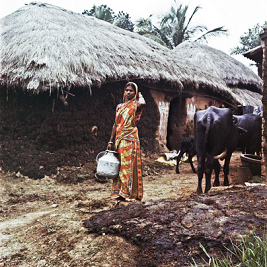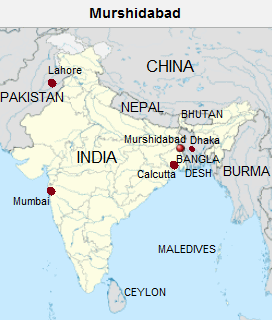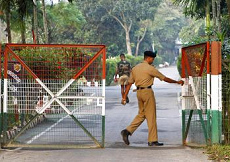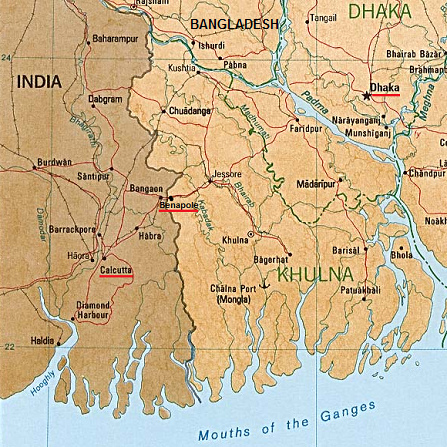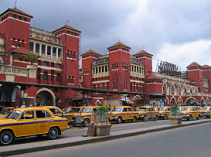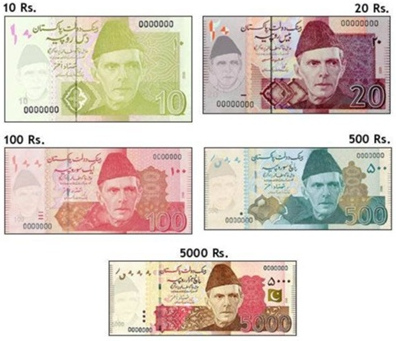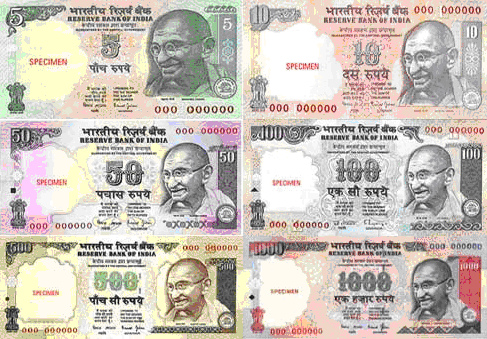Chapter Three: the agents, part 1: South Asia
Part 1: 1: conditions with poverty, discrimination, culture of concealed brothels - 2: South Asian region with India as it's hub - 2.1: trafficking girls from Nepal and Bangladesh to India - 2.2: Pakistan - 2.3: from Bangladesh to India - 2.4: from Nepal to India - 2.5: little and big brothels in India - evading NGOs - 2.6: to buy a woman in South Asia - 2.7: Pakistan with clandestine auctions at the border
[21]
Calcutta in India, prostitutes in a brothel zone [21] - can be a sold bride sold by her husband...
by Louise Brown
presented and with subtitles by Michael Palomino (2013)
| Share: |
Facebook |
|
Twitter
|
3.1: Conditions in Asia provoking prostitution: poverty, discrimination, culture of concealed brothels
Asian governments let the poor be poor - prostitution often is the only way to survive
Trafficking and the buying and selling of females for prostitution is an expanding trade run by a loose but gigantic web of people. Some of these are experienced professionals in the sex industry and some are small-time merchants making one-off deals with the bodies of children and young women.
The level of exploitation a woman will encounter in the sex industry is largely determined by the way she is inducted into the trade. Trafficking of girls and their forced entry into prostitution is a common method of recruiting new products into the lower echelons of the Asian sex market. However, it is not the only way that children and women are coerced into prostitution. In less-developed parts of the region urban slums are breeding grounds for girls who become absorbed within the sex industry. Hundreds of thousands of children living in miserable poverty on the streets of Asia's cities provide another vast reservoir or cheap bodies. Selling sex is the only way some of these children can survive.
Asian culture is hiding sexuality in secret brothel prisons - so the demand for prostitutes is high - so there is much women trafficking also across the borders
Trafficking occurs because there is a large demand for cheap (p.61),
purchased sex. In some Asian countries, like Pakistan and India, this demand is heightened because of the restrictions placed upon women and their limited interaction with men. In other countries such as Japan, there is a shortfall [too less] in the number of local women willing to work for low wages in the sex industry. Most are safely ensconced [hidden] in respectable marriages or they have alternative occupations. Importing women from other countries therefore makes up the shortfall. The advantage with this import strategy is that the imported women are significantly cheaper than the home-grown variety.
Asian girls making queue for brothels
Contrary to popular myth, large numbers of girls are not abducted [hijacked], drugged and then forced into prostitution. Agents do not need to go to such lengths. There is a ready supply of candidates for the brothels without engaging in risky abductions [hijackings].
China: Kidnapping for forced marriage
Kidnapping does take place in some parts of China but this appears to be confined to the abduction of girls for marriage rather than prostitution. In these instances the young woman's body is purchased for the benefit of one man and not for the pleasure of many.
General indications: Brothels in Asia
Trafficked women almost always end up in the very worst kind of brothel or club, servicing a large number of clients for very little money. Some receive no payment at all. The structure of the industry and the way in which women are duped [defrauded], forced or enticed [lured] into it varies throughout the region depending on how highly developed the business has become.
General indications: two main markets: South Asian market with India as a hub - South-East and East Asian market with Thailand as a hub - just a 'normal' industry
It makes sense to divide Asia into two main markets in order to understand how the sex trade networks operate.
The first is the South Asian market, with India as its hub. The second is the South-East and East Asian market, with Thailand as its hub. These two giant networks are at differing levels of development, which are conditioned by the regions' general level of economic development and the cultural and social context. In South-East Asia the sex trade has assumed the proportions of a fully fledged [developed] industry and in parts of the region it is approaching the status of a 'normal' industry. South Asia's trade is less sophisticated (p.62),
and there is grater cultural resistance to the concept of sex for sale but, even here, we can see that the industry is following a course towards normalization that has been set by its South-East and East Asian counterpart.
3.2: The fist system: South Asian region with India as it's hub
3.2.1: Trafficking girls and women from Nepal and Bangladesh to India
Girls trafficked from Nepal and Bangladesh to India - girls trafficked within India
Map indicating girls and women trafficking from Nepal and Bangladesh to India [1]
First, let us look at the way that South Asian girls leave their homes and their path to the brothels. There is no consensus on the number of women involved in the sex industry in South Asia. All figures are estimates, and unreliable ones at that. Undoubtedly, however, the trade involves the entry of many thousands of new women each year. The majority of these are not in fact women but girls. Many of them will have barely entered their teens. Girls are taken from Nepal to India and from Bangladesh to India. The National Commission for Women in Delhi estimates that at least half of the girls and women in West Bengal brothels are from Bangladesh [1].
[1] National Commission for Women: The Velvet Blouse, p.3
Women like these have been trafficked internationally and their plight has attracted some attention and media interest. However, internal trafficking of women is far more extensive and its victims experience very similar forms of exploitation.
Pakistan with more Pakistani girls and hardly Bangladesh, Indian and Afghani girls
In Pakistan, for instance, internal trafficking of girls for prostitution is far more common than the trafficking of Bangladeshi, Indian and Afghani women.
India: more Indian women, but also Nepali women
Indian brothels contain a large number of Nepali women but the vast majority of those held in systems of sexual slavery in India are Indian women. There are no major trafficking channels leading into Bangladesh and Nepal.
Mumbai, prostitutes in the street [2]
Mumbai, prostitutes with room with curtain [3]
The overwhelming number of sex workers there [in whole South Asia] are local women as there is absolutely no one else desperate enough to compete for the dubious fruits of the sex trade in these poverty-wracked countries.
The 'older woman' in the village
There is rarely anything approaching a well-defined sex trade organization in the villages and towns in which the women grow up. Girls are usually first pulled into the sex industry's web by someone they know. The typical procurer is an older woman - a friend or maybe a relative - who has secured the trust of the girl and her family. Sometimes these women may run a small business [...] (p.63)
recruits girls now and again. Some may only ever recruit one young girl and send her on her way to a life in the brothels.
[The chain of traffickers: mother - woman trafficker - woman brothel owner
See it precisely: The first trafficker is the mother selling the daughter, and sometimes the daughter is only 7 years old. Or the child was treated that badly that it fled from home, or the child is rejected because there is no food or because it had been violated. Then the second station is coming up: The second trafficker is the older woman coming to the poor village arriving mostly in beautiful clothes and with jewelry paying for the girls and young women bringing them to brothel prisons far away where the boss of the brothel prison [the boss is called mama-san or baghwali] is mostly an "old friend" of the second trafficker. Thus trafficking for brothel prisons in Asia is mostly an affair of WOMEN. We will see this later and also more causes for the selling of daughters].
Example: Trafficking of a girl where the father had died - from West Bengal to a brothel in Calcutta - brought there by a prostitute - virginity was sold
This is how a fourteen-year-old prostituted girl explained how she had arrived in a Calcutta brothel from her impoverished village in [the province of] Murshidabad, West Bengal:
Village in Murshidabad District with huts, woman and stinking cow pats [5]
Comes an old lady in beautiful clothes and with jewelry inviting girls for good jobs "in the city"...
Map of India with Murshidabad (town and district), Dhaka, Calcutta, and Mumbai [4]
<There was a woman in my village who was about ten years older than me. She had left the village a few years before and one day she came back and brought her husband with her. She had nice clothes and said she and her husband had good jobs in Calcutta and a beautiful house and jewelery and good clothes. She said to me, 'Come to Calcutta and I can get you a good job and you can help your family.' At first my mother said no but eventually she agreed because there was nothing else I could do and we did not have enough food after my father died.>
From the rest of this girl's conversation it transpired that the woman who enticed her to Calcutta was a prostitute herself and that the husband was not a real husband but a babu (a regular client). This couple sold the girl's virginity to one of the woman's favored clients, and afterward traded her to a large brothel in Calcutta's Bowbazar red light area.
[Now there is concealed how much the girl got for the selling of her verginity, how much money was sent home and how high the percentage for the girl trafficker was. It cannot be only a little sum].
Many traffickers are ex prostitutes knowing the brothels
Most recruiters are not practicing sex workers but many may be former sex workers who know the business and how to initiate new recruits into the trade. The women who manage significant parts of the Nepali sex trade are the best example of how this type of recruitment operates.
India with many Nepali sex slaves - elder women are traffickers now bringing new Nepali girls to the brothels
Large numbers of Nepali girls from Himalayan hill tribes can be found in brothels throughout India's cities. The youngest ones are held in captivity and cannot be seen, but the older ones can be distinguished by their high cheekbones and Mongolian eyes. They work in all-Nepali brothels, which often look more prosperous than their Indian equivalent. The fact that there are so many (p.64)
of these Nepali girls owes something to customer demand for submissive girls with fair skin and oriental features, but perhaps even more to the efficient recruitment and transportation machinery maintained by Nepali brothel owners and their gharwalis (brothel managers).
Girls have been trafficked from pockets of the Himalayas for decades. The girls who first went to India are now elderly women. A few became successful and now manage or own their own brothels. These women send older prostitutes back to hill villages to recruit new staff for their establishment and it is rare for them to return without a batch of fresh girls and young women.
Traffickers are professionals or family members
Recruiters like these are professionals. But there is another numerically more important group involved in the sale of children and women in South Asia: ordinary people. They may be family members: uncles, aunts, cousins, husbands, in-laws and even parents. They are neighbors and friends. Crucially they are the very people their victims trust most. A study of sex workers in India during the 1980s discovered that 33% had been pushed into prostitution by close friends and family [2].
[2] Rita Rozario: Trafficking in Women and Children in India (New Delhi: Uppal Publishing House, 1986), p.117
Example of luring: a 'mother's friend' takes a girl to 'see the city' - delivering the girl to a 'friend' - and the mother's friend is disappearing
This was how a twenty-year-old woman from [Indian federal state of] Karnataka described her journey several years previously into prostitution in Mumbai:
<One day I had finished working in the fields when my mother's friend [WOMAN] suggested that we go for a bus ride and to see the city. I wanted to go because I had never been to the city and I was very excited. On the bus we had a good time eating snacks and talking. When we got to the city we went to visit my 'auntie's' friend [the friend of the WOMAN friend of the mother]. At first it was nice. We had tea but then my mother's friend disappeared and she didn't come back. She had sold me to a brothel.>
Example of luring: promising a job - and the job is far away - manipulation and changing to the brothel
By far the most common means of trafficking young women into the sex industry throughout South Asia is to promise them a job (p.65).
Some know what sort of work they will do but I believe that the majority probably do not. The prospective job on offer may be as a domestic worker. In Nepal girls are frequently enticed with a job in the carpet factories of the Kathmandu Valley. In Bangladesh rural girls are lured with the offer of employment in a garment factory. A few of these jobs may actually exist - but for lots of girls they do not last for very long. The jobs are a kind of staging post on the way to the brothel. Once the girl is away from home and outside the protection of her family and community she is increasingly vulnerable, and it is only a short step from there into the world of the sex trade.
Nepal: luring with jobs - and the brothel is the reality - statistics
From the village to the factory - landing in a brothel
[6]
[7]
[8]
Nepal, Kathmandu Valley, woman with rice harvest [6] - Nepal, Kathmandu, girl in carpet factory [7] - Nepal, Bhaktapur, girls in a carpet factory [8] -
[9]
[10]
[11]
Bangladesh, for example village of Misripara, children on a swing [9] - bazaar of Misripara [10] - Bangladesh, girl working in a garment factory in Dhaka working for 400 to 700 Dhaka per month, an adult person gets 5,000 Dhaka [11]
And often the final stations are brothels in Calcutta or Mumbai...
[12]
[13]
Brothel in Calcutta, 3 prostitutes waiting for customers [12] - Mumbai, youth prostitutes [13]
A recent survey by UNICEF of Nepali prostitutes working in India reveals that around 86% of them did not know that they were destined for the sex market when they left home [3].
[3] UNICEF: A Situation Analysis, p.68
Of those that were duped [lured] into prostitution 82% had been promised jobs [4].
[4] UNICEF: A Situation Analysis, p.86
And echoing the study undertaken in the 1980s, a large proportion of girls reported that they were trafficked by a close female friend or a person they considered to be well known to them [5].
[5] UNICEF: A Situation Analysis, p.87
India: tricking or forcing or pushing girls into prostitution
Very few prostitutes in South Asia make a conscious and positive choice to become a sex worker. Lalitha Nayak who manages the national anti-trafficking program of the Joint Women's Program in Delhi maintains that almost all girls in prostitution in India are either tricked, physically forced or pushed into the profession through dire poverty.
Prithi Patak [woman] who, for the past ten years, has run an NGO aiding child prostitutes in the notorious Kamatipura red light district of Mumbai shares her opinion. 'Ninety-five per cent of girls here in Kamatipura were forced into prostitution,' she insists. 'They did not choose this occupation. The remaining 5% who did come here of their own accord did so by making a negative choice. They simply had no other alternatives.'
Bangladesh: luring girls with a 'job in the city' - familiar members are luring them
Virtually all of the prostituted women and girls I spoke to in Bangladesh had left their homes because they had been promised a job in the city. All left home willingly. Some wanted to escape (p.66)
beatings, some wanted to earn enough money to end constant hunger, and some left because they were told to go. Others went in the great hope that they would be able to help their struggling families and to better their own lives. Yet again, all left with someone they knew and trusted [mostly women deceivers!].
Bangladesh: poor families are happy when a daughter goes 'for the city' sending 'little money home'
The poorest Bangladeshi families do not have to have the loss of a daughter assuaged by payment or what, in other countries, is euphemistically [as a lie] described as an 'advance' on her earnings. Those burdened by poverty and a surplus of daughters are glad to see them depart for the city where they will be able to feed themselves and may even send a little money home.
Bangladesh: poor families cannot afford a girl's marriage - sending her to prostitution
Marriage, rather than employment, is sometimes another avenue toward prostitution for unfortunate Bangladeshi girls. [Woman] Professor Ishrat Shamim of the Center for Women and Children's Studies in Dhaka relates [tells] this story and she believes that it is typical of the way in which marriage is used as a lever to bring girls into the sex trade.
Example of Bangladesh: a poor rickshaw puller with three daughters - daughter Fatema marrying to India - prostitute or not? - no money for bribing the police for work
Rupchand was a poor rickshaw puller who had three daughters. He and his family were approached by an Indian woman who visited their house and who suggested that she should arrange a marriage between Fatema, Rupchand's fourteen-year-old daughter, and a man she knew in India who was looking for a bride. Rupchand accepted the offer on the grounds that it was 'the chance of a lifetime' for his daughter. Fatema left for India and nothing was heard of her again. Some years later the Indian woman returned to the area. By this time Rupchand had died and his widow had become suspicious about her daughter's disappearance. The Indian woman promised that Fatema was doing well but the girl's mother was not convinced. She believed that her daughter had been trafficked but she felt that it would be pointless to report it to the police, as her family was too poor and too powerless to matter.
[Addition: Bribing Asian police so they will just begin their investigation
Police in Asia is working mostly only after paying a high bribe. Therefore the poor in Asia are remaining without any rights mostly and abuse or human trafficking can hardly be investigated because police and translators are often also members of the gangs. Racism and alcoholism in Asia are spread that intensively that poor and victims of damages or of human trafficking are just only laughed. I could see this myself in Thailand].
3.2.2: Prostitution in Pakistan
Pakistan: marriage is often the first step to the brothel
In Pakistan new entrants to the sex industry are commonly recruited through the institution of marriage. Superficially, Pakistan is extremely conservative about sex. Apart from a few isolated and (p.67)
dying red light areas in Karachi and Lahore there is nothing to compare with the large brothels of India and Bangladesh. Pakistan has an extensive and growing trade in high- and middle-class prostitution that takes place in well-hidden brothels in the suburbs, but down at the lower and of the market, where the vast majority of sex workers operate, prostitution is very much a 'family' affair.
[14]
[15]
Happy marriage in Pakistan in Hyderabad [14] - beautiful woman offering herself for men in Pakistan [15].
In Pakistan there are beautiful weddings, but often the husband becomes also the pimp...
The Pakistani system: the husband can be the pimp of the bride - and elder women can be divorced easily
This is the way the system operates: when a Pakistani woman marries she becomes the property of her husband. The extent and implications of this 'ownership' vary according to region, ethnicity and socio-economic class. Many wives are completely at the mercy of their husbands and this is particularly true of women from those areas in which a man will pay bride price for his wife. What the businessmen of the sex trade do is to marry a woman and then pimp her out. What is more, they can legitimately have up to four of these wives. When the wife / prostitute becomes a little too old to attract customers she can be retained to do domestic chores or, just as likely, she can be divorced and a new wife can be recruited.
Example: a wife as a prostitute of her husbands in Lahore in Heera Mandi District
In Heera Mandi, the ancient red light district of Lahore, I interviewed a woman who had been a prostitute for many years and who had been owned and controlled by a series of men. As she aged she was rejected by her 'husbands' and was then picked up by another 'husband' who put her to work at a lower level on the prostitution hierarchy. She is now in her mid-fifties and is wracked by tuberculosis. She dresses in a tattered shalwar-kameez and lives in a tiny hovel of a room without water or electricity. In the darkness, and with a strategically placed candle, she tries to encourage clients to pay a pathetic handful of rupees for her services. Yet even now her new 'husband' continues to takes his cut.
Principle: girl taking the flight from strict home with a 'boyfriend' - the boyfriend sells the girlfriend to a brothel
A small but significant proportion of sex workers are girls who have eloped [took the flight from home] with boyfriends only to find that their new address is a brothel rather than a cozy marital home. [There can be additional conditions for this for example when the girlfriend is pregnant].
Principle: unmarried mothers and raped girls in brothels
Unmarried mothers and the victims of rape form another small but significant category. They are significant because apart from being the victims of awful (p.68)
personal tragedies their fate reveals some unhappy truths about South Asian societies.
Principle: engaged husbands bringing the woman to the brothel
One of the most important of these is that many of the victims of trafficking are totally trusting. They trust the men who promise to marry them but who ultimately lead them to destruction. One of the roots of this trust and naivety is the manner in which girls are socialized to respect and to accord men a value that far exceeds the value they place upon themselves. So when a man flatters and pays attention to a young girl - especially if she is from an underprivileged community - she feels proud to be the recipient of this honor. In this context she can easily be duped [tricked] [6]
[6] I am indebted for these observations to Sr. Fernandes of St Catherine's Home, Mumbai, which operates a shelter for girls in distress and those escaping prostitution.
Example: Nepali girl from Limbu minority - promise of marriage in Kashmir - lured to Mumbai brothel
A common story repeated throughout South Asia is that of the failed romance as a prelude to prostitution. This is the story of a sixteen-year-old Limbu girl from far eastern Nepal. Unlike many of the other trafficked girls she has a moderate level of education and is not from a very poor family.
Nepal, woman from Limbu tribe with traditional clothes [16]
<My job was to buy the vegetables for our family and I would go to the bajar [market] every day. One day there were some new men there drinking tea. They were army men [Nepalis working in the Indian Army]. One was very handsome and he started to talk to me. I ran away because I didn't know what to say. The next day he was there by himself and he told me that he was waiting for me. I thought he was wonderful because he was so handsome and he spoke so sweetly to me.
He said that he loved me and that he wanted to marry me. I saw him every day at the bajar and I really loved him. Then after about one week he said that he was leaving because he had to do army work in Kashmir. He asked me to leave with him because there was no time to prepare a big wedding and he said not to tell my parents. He promised that we would be married in Kashmir. I was so stupid because I believed him. I packed a little bag and ran away with him. But he didn't take me to Kashmir. He took me to Mumbai. I didn't know that it (p.69)
wasn't Kashmir. He said he loved me but all he wanted to do was to make me a prostitute.>
Principle: luring and tricking girls by love and friendship
Strategies that use love and friendship as a means to procure and traffic girls are far more common than the use of outright force.
Example: factories of Kathmandu Valley or in Bangladesh with bad salary - a 'special friend' is luring the girls to 'another factory' with 'better way to earn money' - and it's a brothel prison
The female migrant workers who arrive from their villages to work in the carpet mills of the Kathmandu Valley or in Bangladeshi garment factories are often little more than disoriented children. They work in cramped unpleasant conditions for wages that hardly cover the cost of board and lodgings. Frequently older male workers and the management of the factories sexually exploit them. It is not surprising that they are homesick, however poor their homes and families might have been. And then, as if by a miracle, they find a special friend: someone who offers them affection and psychological support. This person also offers a solution to their financial needs by suggesting that there is a better way to earn money. All the girl has to do is go with them to another factory in a different town or perhaps just across the border. At this stage, however, the girls do not know that the factory does not produce carpets or garments but that it packages girls for prostitution.
Principle: procurers (women) gathering girls and young women in villages
Procurers (women) gather girls and young women from their villages. They are the first link in the chain that takes the recruits to the brothels. At the village level most recruitment does not take place as a part of some larger plan directed from the red light areas of the major cities. It is a far more informal process. The sex industry does not have to involve itself directly in recruitment of girls from their homes. There are plenty of people already living within the community who are prepared to do this.
Principle: recruiters (mostly women) knowing details and weak points about mountain families
What is more, local people make better recruiters. They have direct and personal knowledge of an area. They know exactly which families to target. They know who is poor, which family has too many daughters, which family has suffered the death of a parent or a marital breakdown, which family is experiencing the serious illness of a breadwinner, which family has an (p.70)
alcoholic father, and which family cannot cope. In other words which families cannot, or will not, protect their daughters.
Principle: recruiters (mostly women) operating during hunger times, e.g. in Bangladesh or in Nepal
The most successful recruiters operate at times of hardship. In Bangladesh, for instance, they are most active between June and August when food is scarce. The pattern is common throughout South Asia. In Nepal the recruiters who offer jobs to girls, and who give their families an 'advance' on their earnings, do briskest [very fast] business in the summer before the main harvests are brought in and when a household's food deficit is felt most keenly.
Principle: trafficker (mostly women) paying to the girl's family for the future profit - or even not
Some recruiters do not even offer payment - but only the prospect of finding work for the daughter of a poor family. Others pay according to the age of the girl, her beauty and whether she is a virgin. An impoverished family will receive a reduced payment because the recruiters know that they are desperate. A family in Nepal may therefore receive anything from a few hundred to a few thousand rupees for their daughter. It is a pittance but, in the midst of acute poverty, even a pittance can be precious.
Principle: the more far from home the more in the hands of the traders (mostly women!) is the girl
Small-time procurers may take a girl from the village to the city, and they may even sell her directly to a brothel, but they will rarely take her across national borders. This task is left to more organized groups of traffickers, and the further a girl moves from her home the more likely she is to become drawn into the network of professional traders.
Principle: recruiters (mostly women) in poor countries are considered a work agent
The role of these traders is a complicated one: recruiters and traffickers are vilified - but not universally so. Although the girls they recruit may be viciously [brutally] exploited, some people within rural communities hold the agents in high regard. In India the image of the recruiter is generally poor but, in Bangladesh and Pakistan, the recruiters are sometimes seen as employment agents and facilitators offering the chance of a better life to the people who pass through their hands. Perhaps this view should be underlined to reluctant [with doubts] prostitutes.
Principle: a 'procurer' (mostly women) comes recruiting girls - handing them over to an 'agent' (also often women) - traveling far away
In the parts of Bangladesh and Nepal that are not prostitute-breeding grounds, girls are recruited from their homes by a (p.71)
procurer. This procurer will then hand them over to an agent who takes them on the next leg of their journey. Typically they travel by bus and on foot. Sometimes they are transported in small groups and sometimes singly in order to avoid suspicion.
3.2.3: Border crossings from Bangladesh to India
Principle: not much control - bribes
Border gate on Indian Bangladeshi border [17]. Sometimes some border staff may be corrupt.
Border crossings are potentially the most dangerous part of the trafficking process, but generally South Asia's international borders are not rigorously policed and many border patrols find it hard to distinguish trafficked girls from the general population. Some that do distinguish the traffickers are paid to look the other way either in cash or in kind.
From Bangladesh to India: girls have to give sex to border patrol men with threat of being arrested
Girls trafficked out of Bangladesh, fore example, report being forced to provide sexual services to border patrols in order to avoid arrest.
From Bangladesh to India: labor migrants called 'dhurs'
The illegal migrants smuggled across the Indo-Bangladeshi border are known as dhurs. They include girls and women who are trafficked for prostitution and also other forms of exploitative labor. Another group of migrants is made up of poor men and older women who seek work in India and who cannot afford a passport to leave the country legally.
Map with Dhaka, Benapole and Calcutta 18]
From Bangladesh to India: a guide 'ghat' (often woman guide) leading the group - also walking through fields or crossing rivers
A veritable industry has been made of this border crossing with local entrepreneurs acting as owners and managers of the transit points, or ghats. The border is not officially open but it is easy to cross with the help of the ghat men in places like Satkhira, Jessore, Meherpur and Chapai Nawabganj. In some places the migrants and the trafficked women simply walk through fields; in other places they wade through rivers.
Example: Benapole transit point (between Dhaka and Calcutta) with many little houses at the border - food in the night - border crossing fee must be worked off in the brothel
The Benapole transit point on the Indo-Bangladeshi border reveals that illegal crossing are commonplace. It also illustrates how the traffic in migrants is well organized. The border area is dotted with houses which resemble small huts. During daylight these houses appear uninhabited but at night they are the scenes of feverish activity. A lot of food is prepared for a seemingly large number of guests. These guests are the dhurs [migrants] and among them will be girls traveling to the Indian sex industry. A few may even go further afield to Pakistan. They wait in the houses until the ghat men take (p.72)
them across the border. For this service the dhurs [migrants] pay a fee of 500 taka (7 English Pounds), which is about half the average monthly wage of a female worker in a garment factory. This sum will form part of the debt the trafficked girl must repay by selling sex.
3.2.4: Border crossings from Nepal to India
Trafficking of girls from Nepal is illegal, but crossing the border between India and Nepal is easy because the border is officially open and Indians and Nepalis can cross without passport. Halting trafficking along this five-hundred-mile open border poses considerable practical difficulties. Most trafficking, however, is conducted across the fifteen major border points between the two countries. In theory the border police monitor those who pass through the checkpoints very closely. But, in practice, this is not what happens.
Example: Kakarvitta border town (eastern Nepal on the way to Calcutta) - secret path passing tea gardens - passing the border river - instructions to the girls and women what they should 'respond to the questions of the border police'
For example, Kakavitta is a border town in the far east of Nepal. It is a gateway through which many hundreds, and perhaps many thousands, of Nepali girls have left for India. The young and enthusiastic police officer in charge of the checkpoint is making a concerted effort to stem the flow of girls to India and traffickers have been arrested in the process of transporting girls south. But, unfortunately, traffickers do not necessarily have to face the rigors of the border checkpoint.
Map of India and Nepal with the border town of Kakarvitta on the way from Kathmandu to Calcutta [19]
What they do is to skirt the town, cross through the tea gardens and scramble down a path to the banks of the wide Mechi River that divides the two countries. Then they can either cross over the bridge or, during the dry season, they can wade across the river. The ease of crossing into India at Kakavitta is replicated [repeated] all along the Indo-Nepal border and the majority of the Nepali girls I spoke to who had been prostituted in India seemed puzzled by my question surrounding the difficulties of crossing the border. Many stated that they had been drilled to respond to the questions of the border police by claiming that they were the trafficker's cousin, or sister-in-law, and that they were on their way to visit family members living in India.
General indications: smart agents - changing routes
The agents who accompany girls to the cities are smart. They know how to avoid the authorities and the organizations combating (p.73)
trafficking. They do not take the girls along the most direct and obvious routes. In some places they take a detour and stop for a few days or weeks to avoid the suspicion that they are ferrying girls to market. Whenever agents believe that their movements have become exposed they switch to another route.
Example: Bangladeshi husband sells his wife to friends and to a brothel in India
This was the way one Bangladeshi woman described her ordeal [torture]:
[20]
[21]
Marriage in Bangladesh [20] - Calcutta, prostitutes in a brothel zone [21] - can be a sold bride sold by her husband...
<After we had been married for a few days my husband said that we had to go to India to look for work. We left our home in Dhaka and crossed the border. After that we traveled by bus to many different towns and villages. My husband knew lots of people in these places and we stayed in small hotels. My husband let his friends use me and they gave him money. At first I refused but then he would beat me. He was pleased with me when I earned money for him. After a few weeks we came to Calcutta and he sold me to a brothel. The work here is not much different than when I was married.>Principle: the more traffickers are involved the more the price of the woman is rising
A whole series of agents may be involved in the trafficking process and they pass the girl from one to another. At each leg of her journey, her price increases because each of the traffickers wishes to make a profit from her. By the time she reaches the brothel her 'value' can be as much as a hundred times what her family received for her.
[Many times these traffickers are also women, not only men].
Principle: full-time traffickers are mostly sons of prostitutes - only in rare cases there is sex between the trafficked woman and the man trafficker - for reputation reason
A high proportion of the traffickers - as opposed to the procurers - are full-time professionals. They are often the sons of sex workers. Some of the less professional traffickers force the girls to have sex with them on the journey, but most do not. Far from being a mark of respect for the girls, this restraint is necessary in order to preserve the men's own reputations. Their credibility within the sex trade would be severely dented [deformed] if they were found trying to pass off used goods as high-cost virgins.
Principle: girls and women are helpless in the new country
Girls have mixed recollections of their journeys to the brothels (p.74)
and this is especially the case if they were trafficked over long distances. Some said they were excited about going to the city, some were bemused [puzzled] at the new world they were seeing and others were frightened. Ironically, many claimed that they relied upon the person who was trafficking them. The trafficker helped them to cope in an alien environment: he or she gave them food, managed the transport arrangements, found somewhere for them to sleep and spoke the sometimes unfamiliar language. Many girls said that they could not have run away even if they had been given the opportunity, because they did not know where they were, who to speak to, and sometimes [very important point] in what language to communicate.
Principle: girls coming by train looking for work in a mega city - and lured into sex business with a faked promise for a job
Not all girls who are forced into brothel-based prostitution are brought by agents from the villages. Some arrive under their own steam. They are classic rural-urban migrants seeking work in the cities and they find themselves sucked into the sex trade because they are young and naive and vulnerable. A visit to the bus and rail stations of large South Asian cities is convincing evidence of the rich pickings awaiting canny agents. In Howrah train station and Esplanade bus terminal in Calcutta, tired and uncertain teenage girls arrive from their villages. Sometimes they come along, sometimes with a friend. Waiting for them are pleasant, middle-aged women of respectable appearance who say that they know where the new arrivals can find jobs. To the girls it seems like an answer to their prayers and a path towards a new life.
Example: girl is lost in Howrah train station in Calcutta - and is 'found' by a woman - with a faked promise for a 'very good job' - brought to Mumbai - sold to a brothel
An eighteen-year-old girl described how she was approached in Howrah station.
Woman in India with a sindoor (red powder) in the middle of her hair [23]
Howrah railway station in Calcutta [22], where older women are waiting for new girls and young women manipulating and selling them into prostitution
<I came from my village and traveled first by bus and then by train. My friend came with me. When we got to the end of our journey we weren't sure what to do. The station was so big. My friend said we could go and stay with her uncle who lived in Calcutta and that he would help us to find jobs, but we didn't know how to get there. Then a woman started to talk to us. She was very friendly and nice. She looked like a (p.75)
good woman because she wore nice clothes and jewelry and she wore sindoor in her hair (red powder in the middle of the hair as a sign of a married woman [web01]). She promised us that she knew where we could get very good jobs and earn lots of money working in rich people's houses. The jobs were in Mumbai but she told us that she would pay for our train fares. So we went with her but when we got to Mumbai there were no jobs in rich people's houses. She sold me to one brothel and my friend to another brothel. That was about four years ago. A customer helped me run away from the brothel but my friend is still there. I want to help her to escape too but I don't know where she is.>
Principle: transit centers are passed before selling the girls and young women to the brothels by agents
Trafficked girls are frequently taken first to transit centers. These function rather like large clearing houses. From there agents will distribute them to the most appropriate market. Calcutta, Agra and Benares, among others, serve as significant transit centers in India. Karachi and Lahore are the Pakistani equivalent.
3.2.5: Little and big brothels in India - evading NGOs
India: little brothels in restaurants along the highways and in smaller towns - big brothels in big towns
It is commonly assumed that girls and women who have been trafficked from other countries are inevitably destined for large brothels in major urban centers. This is incorrect. Many are, but an even higher proportion never make it that far. All Indian towns have brothels, and sex is a cheap and easily available commodity along Indian highways. Virtually every dhaba (a small restaurant or transport cafe) runs a lucrative sideline offering girls to truck drivers and men who are passing through. The most attractive trafficked girls do get taken to the big centers like Calcutta and Mumbai but those with lesser physical charms are sold off to these dhaba-affiliated brothels and to the red light areas of smaller towns.
India: little brothels in little towns are created to evade NGOs and alerted police in big towns - Kamatipura in Mumbai is not the center of prostitution any more to evade NGOs
[24]
[25]
Mumbai, slum Dharavi with houses and trash [24] - Mumbai, boy taking a bath in a plastic drum in the slum of Dharavi [25]
Politicians mean when people have to live like this, prostitution could be reduced? Politicians are blind...
It makes sense for traffickers to diversity and not to depend solely (p.76)
on a few markets for young prostitutes in the big cities. There is increasing awareness of trafficking in these cities. In the well-known red light areas there are NGOs working on trafficking issues and child prostitution. These organizations are small in number and size but they can be an irritation for the sex industry. Even sections of the police seem more alert to the issues. This combination can create problems for traffickers, and many agents are now sending their goods to non-traditional red light areas.
In sleepy towns and backwater brothels [brothels in little town in the countryside] along the highways there is zero police interference. There are virtually no NGOs operating here. Even within cities the NGOs congregate in a handful of areas. Meanwhile the structure of prostitution is changing around them. To give an example, in Mumbai almost all NGOs working on prostitution issues are concentrated in Kamatipura. A survey of sex work in the city, however has shown a proliferation of red light areas away from the customary centers so that there are now around thirty-three sites of brothel-based commercial sexual activity in the city [7].
[7] Committed Communities Development Trust, Mumbai. Draft report on the development of brothel-based sex work in Mumbai, 1999
There is a greater and greater demand for prostitution in a greater variety of locations throughout South Asia. The traffickers have simply responded to this demand by diversifying and targeting a wider market.
South Asia: agents with an 'agreement' with a particular brothel - agents affiliated with a single brothel - or agents negotiating a 'deal' - or agents showing girls around
Agents (often women!) arriving in towns and cities with a batch of new recruits may have an agreement to supply them to a particular brothel. Some agents may be affiliated with a single brothel. Others will have to negotiate a deal. They will take the girls to their contacts within the red light areas and see who is ready to buy. The merchandise is inspected and a price agreed.
Example of Bangladesh: girl has to smile to the future brothel owner
A teenager in a Bangladeshi brothel related her own experience:
<The agent took me to the brothel. It was a very big building with two or three girls in each room. I was put in one of these rooms and then some people came to look at me and to ask questions about me. A woman pinched me and said I was (p.77)
thin. Then they went out of the room. I heard the agent arguing with them outside the door and then he took me away to another brothel. He was very angry and he kept twisting my arm and slapping me and telling me that I had to smile at the people. At the next brothel he was happy because he sold me to a woman who had other girls working for her.>
3.2.6: To buy a woman in South Asia - instead to marry her
To buy a woman is cheaper than the marriage with the bride price
Brides are bought in large parts of South Asia. In parts of Pakistan it is cheaper to buy a woman outright [openly without concealing anything] rather than to go through the ritual of purchasing her through bride price.
Bangladeshi women sold to Punjab in India - there are happy cases - and there are sex slave cases
Bangladeshi women are sold as brides to the Indian Punjab. Some of these purchased brides are happy with the transaction and lead more prosperous lives in their new families than they could ever have expected if they had remained at home. Many, however, do not. They are condemned to a terrible life of sexual and domestic exploitation in an unfamiliar and hostile place. These women are undocumented and unrecognized sex slaves.
From Bangladesh to Pakistan - an activist believes that there are horrible conditions for the trafficked women
Hina Jilani, a lawyer and human rights activist based in Lahore, believes that many of the Bangladeshi women who were trafficked to Pakistan in the 1980s and early 1990s and who were forced into prostitution, are now living in horrifying conditions of servitude in rural Pakistan. Many thousands of women were allegedly transported across the subcontinent but have now apparently 'disappeared'. After working for a spell [short time] as prostitutes these women are now too old to be lucrative sex workers for their pimps. One theory suggests that they have been sold off as wives / slaves to rural Pakistani men. There can be few more terrifying fates.
3.2.7: Pakistan: The clandestine auction of girls and women on the border
From Bangladesh to Pakistan: clandestine auctions at the border location - an auctioned girl has no reputation and no rights
Clandestine auctions are held in Pakistan's North-West Frontier Province. Women and girls form the merchandise and they are sold to the highest bidder. Ostensibly [allegedly] they are sold for marriage, and the auction process is explained as a simplified and quicker version of the traditional payment of bride price. It is also cheaper.
An argument used to rationalize the process is that hardworking men cannot (p.78)
afford to spend large amounts of time searching for a bride and negotiating the financial deal. An auction speeds up this process. It also has a singular advantage: the auctioned girls are highly vulnerable. No one is going to follow a purchased girl's fate. These girls can be bought for any purpose. And, in practice, they are [8].
[8] In conversation with I.A. Rehman, Chairman of the Pakistan Commission for Human Rights, Lahore
[Pakistan: Woman can be sold for making money for the woman's family
See this news of 2009, and this is nothing special in Pakistan as it seems:
<JACOBABAD A 20-year-old girl was auctioned at village Badani Bhutto of Taluka Kashmore in consideration of Rs [Pakistani Rupees] 270,000 [2014: 2800 "US"-Dollar, 1 Dollar=96 Pakistani rupies] on Saturday. Azizan, daughter of late Allah Bux Bhutto, was divorced on the allegation of Karo-kari some time back. She is stated to be mother of two children and was residing with her brother who held the open auction for her 'sale at village Badani Bhutto. A large number of villagers showed interest in the auction that started with Rs50,000 and ended at Rs270,000. Bilawal Bhutto, 50, of the same village purchased her for the said amount. Initially he paid Rs210,000 for the girl. Maulana Azizullah Bhutto performed their nikah later. It is irony of the situation that no one condemned the inhuman act. The groom will take the bride to his house after paying the rest of the amount. The auction money was distributed equally among all the brothers of the girl.> [web02]
When the relation does not work, then the woman can "organize" her brothers or she is sold again, perhaps to one of her brothers saving her...]
Rupees from Pakistan [26]
Variations with girls and women with different prices
The sex industry does not place just one product on the market. Even within the brothel sector the product is not uniform. There are vast variations in the type of women or girls available: prices vary according to
-- age,
-- beauty,
-- ethnicity,
-- whether she is a virgin,
-- whether she has had children, and
-- what services she can perform.
Women who enter prostitution in their twenties will fetch [get] very little because they have limited working life left. A girl of about nine or younger will also be cheap because she will have to be supported for a year of two before she can start earning substantial sums on a regular basis. The price a brothel pays to an agent for an individual girl will depend upon these factors.
It will also fluctuate according to the basic laws of supply and demand. Prices drop when there is a glut of girls on the market. Typically this happens when some crisis in the rural areas propels more young women to the cities. Similarly, they also decrease when seasonal food shortages in the countryside mean the procurement rates rise.
Prices vary also from place to place
Prices also vary according to the nature of demand. In Mumbai and Delhi, for instance, prices are higher than in less prosperous Calcutta. Consequently South Asian brothels do not pay a uniform price for their girls.
Example: prices for girls in Calcutta
In Calcutta girls can be sold for anything from a few hundred rupees to around 10,000 rupees (7 to 140 English Pounds).
Rupees of India [27]
Principle: the price of a girl in Calcutta is composed of several charges
This is the way the dealers arrive at a price: the girl might be bought from her parents for somewhere between 200 and 2,000 [Indian] rupees (3 to 30 English Pounds). Then further 'value' is added. A procurer will charge between 1,000 and 2,000 [Indian] rupees for their services. Perhaps a couple of hundred rupees will be paid out as bribes to police and border security forces. The trafficker will then add his or her own fee of 1,000 to 3,000 rupees. When this is totaled it becomes the cost of the girl.
Example: prices for girls in Mumbai
A similar accounting procedure is (p.79)
followed in Mumbai but here the total cost of a girl maybe as high as 30,000 [Indian] rupees (420 English Pounds). There are reports of Nepali girls fetching as much as 50,000 rupees (700 English Pounds) but Prerana, the leading NGO in Karmatipura, has never come across payments exceeding 25,000 rupees (550 English Pounds). This is the cost of purchasing a sex slave in India today [estate 2000]. This slave then has to repay her cost by servicing any man who is willing to pay for her (p.79)
| Share: |
Facebook |
|
Twitter
|
Sources
[web01] http://en.wikipedia.org/wiki/Sindoor
[web02] http://www.nation.com.pk/pakistan-news-newspaper-daily-english-online/Politics/13-Dec-2009/Girl-sold-in-open-auction
Photo sources^
[1] map of India, Nepal and Bangladesh: http://www.vidiani.com/?p=3530
[2] Mumbai, prostitutes in the street: http://www.boston.com/news/world/articles/2007/08/01/for_youngest_girls_enslaved_in_sex_trade_more_woe/
[3] Mumbai, prostitutes with room with curtain: http://www.london-photographic-association.com/site/lightbox1.php?type_f=3&fid=0&user_id=9589&ord_f=4
[4] map of India with Murshidabad: http://de.wikipedia.org/wiki/Murshidabad
[5] village in Murshidabad District with huts, woman and cow pats: http://trivialmatters.blogspot.com/2012/10/diary-from-murshidabad.html
[6] Nepal, Kathmandu Valley, woman with rice harvest:
http://www.gettyimages.com/detail/photo/nepal-kathmandu-valley-sankhu-village-girl-high-res-stock-photography/200519189-001
[7] Nepal, Kathmandu, girl in a carpet factory, photo by James Morgan: http://james.photoshelter.com/image/I0000uNoxRMA.h9w
[8] Nepal, Bhaktapur, girls in a carpet factory, photo by Robert Harding:
http://www.masterfile.com/stock-photography/image/841-02706781/Portrait%20of%20child%20labourer%20in%20carpet%20factory,%20Bhaktapur,%20Kathmandu%20Valley,%20Nepal,%20Asia
[9] Bangladesh, village of Misripara, children on a swing:
http://journals.worldnomads.com/suhrid/photo/25661/707424/Bangladesh/Lovely-childhood-At-Misripara-village-in-Bangladesh
[10] Bangladesh, the bazaar of Misripara, photo by Shameem Bakhshi: http://www.panoramio.com/photo/85678428
[11] girl working in a garment factory in Dhaka: http://thewe.cc/weplanet/news/children/child-labour-bangladesh.htm
[12] brothel in Calcutta, 3 prostitutes waiting for customers: http://shaungroves.com/2013/04/4-ways-you-can-help-end-slavery/
[13] youth prostitutes in Mumbai: http://en.academic.ru/dic.nsf/enwiki/17191; http://en.academic.ru/pictures/enwiki/49/11.02450_Brothel-girls-11.jpg.gif
[14] marriage in Pakistan in Hyderabad: http://www.thehindu.com/news/international/sania-shoaib-to-be-pakistan-brand-ambassadors/article406018.ece
[15] prostitute in Pakistan: http://www.elnashra.com/news/show/566266/%D9%85%D8%B8%D8%A7%D9%87%D8%B1%D8%A9-%D9%84%D8%B9%D8%A7%D9%85%D9%84%D8%A7%D8%AA-%D8%AC%D9%86%D8%B3-%D8%A7%D8%B3%D8%B7%D9%86%D8%A8%D9%88%D9%84-%D8%A7%D8%AD%D8%AA%D8%AC%D8%A7%D8%AC%D8%A7-%D8%B9%D9%84%D9%89-%D8%A5%D8%BA%D9%84%D8%A7%D9%82-%D8%A8%D9%8A%D9%88%D8%AA-
[16] Nepal, woman from Limbu tribe: http://www.aabc.co.in/travel-tourism-/1551-nepal-natures-nectar.html
[17] border gate on Indian Bangladeshi border: http://www.taipeitimes.com/News/world/archives/2011/04/08/2003500230
[18] map with Dhaka, Benapole, and Calcutta: http://www.oocities.org/shpn0/Bangladesh_rel96.jpg
[19] map of India and Nepal with the border town of Kakarvitta: http://www.travelindia-guide.com/maps/physical_map.php
[20] Bangladesh, marriage: http://personallyabid.wordpress.com/category/bengali-culture-beauty/
[21] Calcutta, prostitutes in a brothel zone: http://news.bbc.co.uk/2/hi/south_asia/4055143.stm
[22] Howrah railway station in Calcutta: http://www.panoramio.com/photo/1445962
[23] a sindoor in the hair of a married Indian woman: http://www.trekearth.com/gallery/Asia/India/East/West_Bengal/Howrah/photo1372340.htm
[24] Mumbai, slum Dharavi with houses and trash: http://www.guardian.co.uk/sustainable-business/slumdwellers-savings-co-operative
[25] Mumbai, boy taking a bath in a plastic drum in the slum of Dharavi: http://dawn.com/2013/05/02/south-asia-in-focus-2/
[26] rupees of Pakistan: http://belgiumpakistan.wikia.com/wiki/Pakistan_Currency
[27] rupees of India: http://pune-india.info/gr/?page_id=33
[xxx4] map of Thailand with neighboring countries and China: http://www.pattayavillaholidays.com/maps-of-thailand.html
[xxx5] map of Vietnam and Cambodia with Mekong River: http://mekong-delta.org/map/
